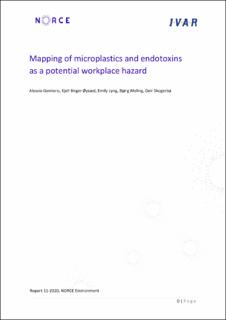| dc.description.abstract | Humans are potentially exposed to microplastics through several exposure pathways including food, drink, and air. So far little is known about the occurrence of microplastics in indoor environments especially in connection with industrial activities dealing with the use of raw materials potentially enriched with micron sized plastics. In the present study, the indoor air of an industrial unit turning sewage sludge into fertilizer products has been characterized for microplastics content. Collected samples have been investigated by both a thermo-analytical method (pyrolysis-GCMS) and a vibrational microscopy (μ-FTIR) method. Synthetic fragments and fibers accounted, on average, for 9% of the total identified particles in the analyzed air. Polyester was the predominant synthetic polymer in all samples (31-61%), followed by polyethylene (4-58%), polypropylene (1–15%), nylon (2–34%) and acrylic paints (1–20%). Microplastics typically ranged from 10 μm (size limit of the current spectroscopic method) to 270 μm. As the identified microplastics can be inhaled, these results highlight the potential direct human exposure to microplastic contamination via indoor air in the working environments addressed in this study. | en_US |
